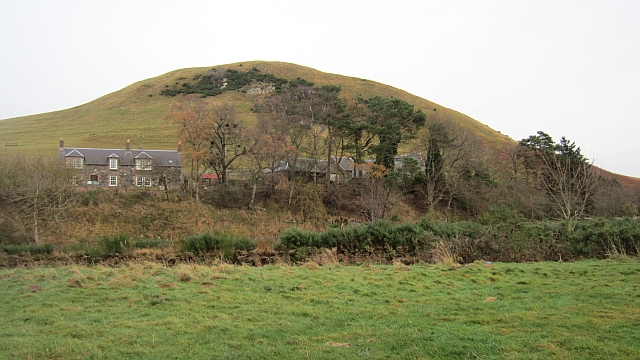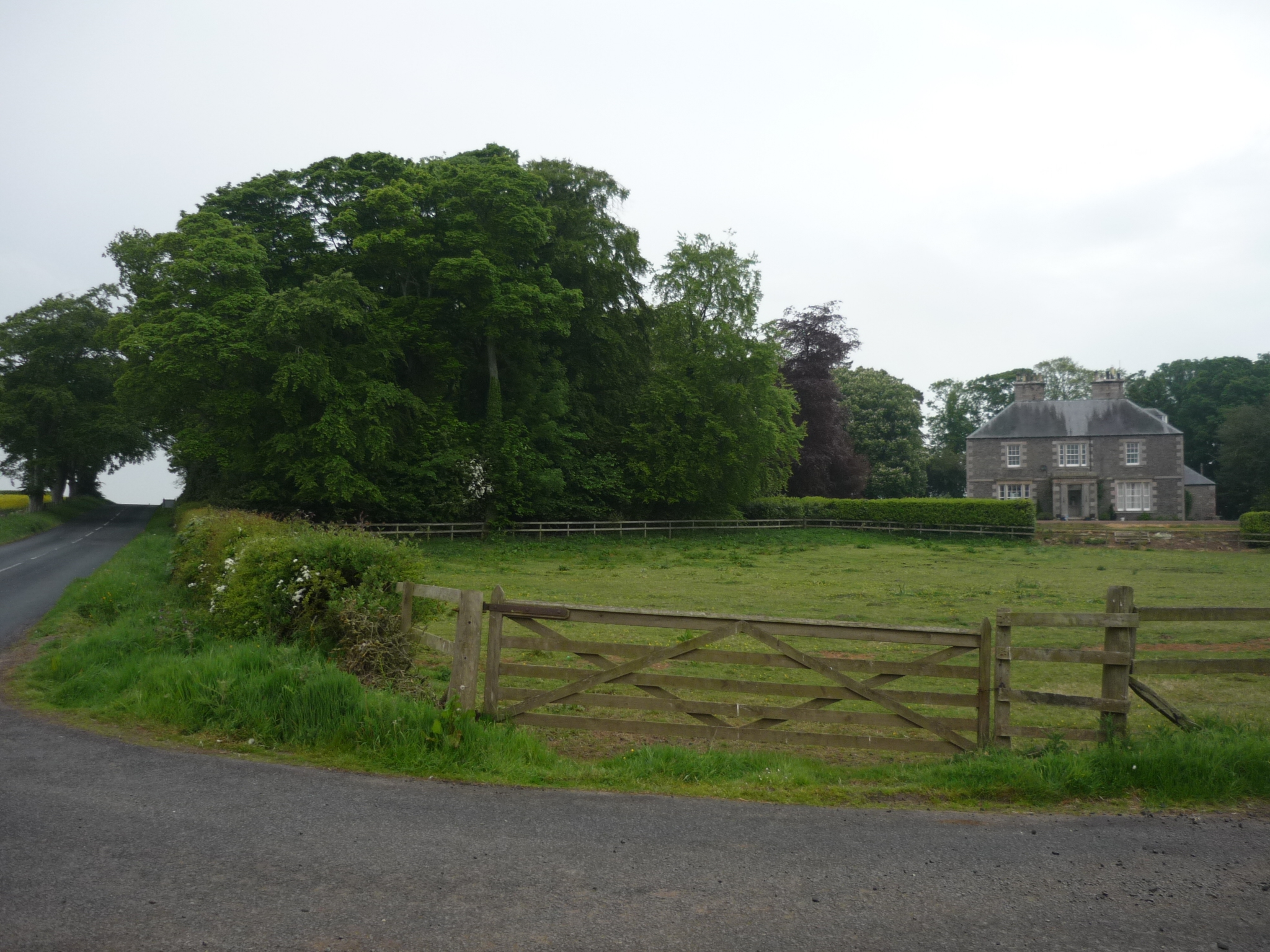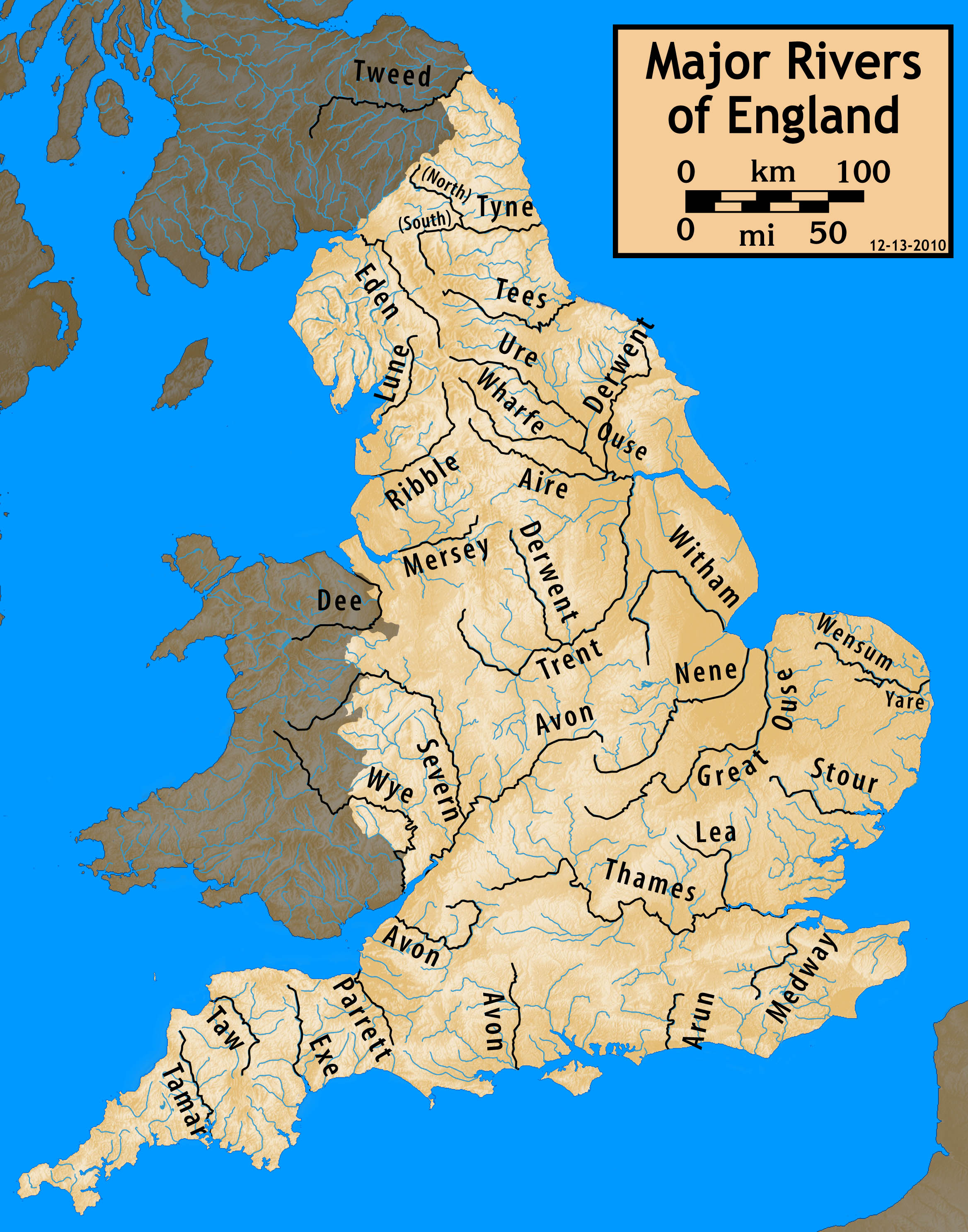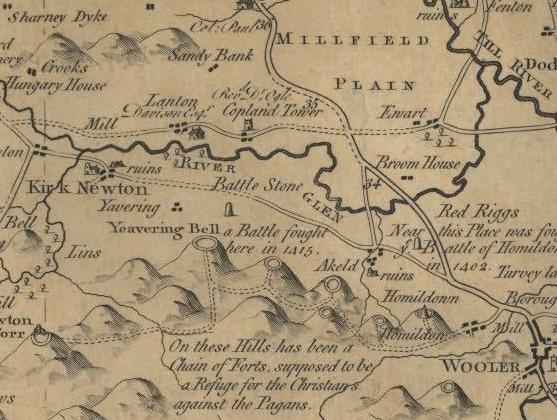|
Bowmont Water
Bowmont Water is a stream in the Scottish Borders and Northumberland, England. It rises in the Cheviot Hills and flows by Mowhaugh, Town Yetholm, and Kirk Yetholm. It then crosses the Anglo-Scottish border and continues past Mindrum Mill, Mindrum Station, Thornington, and finally to Lanton Mill where it joins College Burn to form the River Glen. Scottish Border poet and Australian bush balladeer Will H. Ogilvie (1869–1963) in his first anthology ''Fair girls and gray horses'' (1898) fondly reflected on the land of his heritage while in Australia (1889–1901), penning a five stanza of the same name. :We have wandered down the valley ::In the days of buried time, :Seen the foxgloves dip and dally, ::Heard the fairy blue-bells chime; :Seen the brier roses quiver ::When the West-wind crossed the dell, :Heard the music of the river ::And the tale it had to tell, :Where the melody Love taught her ::Is the laverock's only lay, :At the foot of Bowmont Water, ::Bowmon ... [...More Info...] [...Related Items...] OR: [Wikipedia] [Google] [Baidu] |
Mowhaugh
Mowhaugh is a hamlet and farm steading near the Calroust Burn and the Bowmont Water, near Morebattle, in the Scottish Borders area of Scotland, and in the former Roxburghshire. It is situated about 5 miles (8 km) from the Anglo-Scottish Border. History The recorded history of 'Mow' or 'Molle' dates back to the 7th century, when it was granted with other lands and settlements on the Bowmont Water to Lindisfarne.The Former Parish of Mow or Molle retrieved 11 May 2014 In the it was a substantial settlement with a large population, a , and ma ... [...More Info...] [...Related Items...] OR: [Wikipedia] [Google] [Baidu] |
William Henry Ogilvie
Will H. Ogilvie (21 August 1869 – 30 January 1963) was a Scottish-Australian narrative poet and horseman, jackaroo, and drover, and described as a quiet-spoken handsome Scot of medium height, with a fair moustache and red complexion. He was also known as Will Ogilvie, by the pen names including 'Glenrowan' and the lesser 'Swingle-Bar', and by his initials, WHO. Ogilvie was part of the trio of Australian bush poets, with Banjo Paterson (1864–1941) and Henry Lawson (1867–1922). His ''Fair girls and gray horses'' (1896) was considered second only to Banjo Paterson's '' Man from Snowy River'' (1895). A reader ballot in 1914 saw him placing seventh of Australia's twelve most favourite poets.The 1914 Melbourne's ''Herald'' ballot ranked the top twelve of one hundred and ten favourite Australian poets as: 1st Adam Lindsay Gordon, Henry Kendall, Bernard O'Dowd, Victor Daley, Henry Lawson, Banjo Paterson, Will H. Ogilvie, James Brunton Stephens, Roderic Quinn, Mary Gilmor ... [...More Info...] [...Related Items...] OR: [Wikipedia] [Google] [Baidu] |
List Of Rivers Of England
This is a list of rivers of England, organised geographically and taken anti-clockwise around the English coast where the various rivers discharge into the surrounding seas, from the Solway Firth on the Scottish border to the Welsh Dee on the Welsh border, and again from the Wye on the Welsh border anti-clockwise to the Tweed on the Scottish border. Tributaries are listed down the page in an upstream direction, i.e. the first tributary listed is closest to the sea, and tributaries of tributaries are treated similarly. Thus, in the first catchment below, the River Sark is the lowermost tributary of the Border Esk and the Hether Burn is the lowermost tributary of the River Lyne. The main stem (or principal) river of a catchment is labelled as (MS), left-bank tributaries are indicated by (L), right-bank tributaries by (R). Note that in general usage, the 'left (or right) bank of a river' refers to the left (or right) hand bank, as seen when looking downstream. Where a named river ... [...More Info...] [...Related Items...] OR: [Wikipedia] [Google] [Baidu] |
List Of Rivers Of Scotland
This list of rivers in Scotland is organised geography, geographically, taken anti-clockwise, from Berwick-upon-Tweed. Tributary, Tributaries are listed down the page in an upstream direction. (L) indicates a left-bank tributary and (R) indicates a right-bank tributary whilst (Ls) and (Rs) indicate left and right forks where a named river is formed from two differently named rivers. For simplicity, they are divided here by the coastal section in which the estuary, mouth of the river can be found. Those on Scottish islands can be found in a section at the end. For Scottish estuaries, please see under firths and sea lochs. The Scots have many words for watercourses. * A "Water" (Scots language, Lallans: "Watter", Scottish Gaelic, Scots Gaelic, "Uisge") is a smaller river, e.g. Ugie Water, Water of Leith etc. Many Scottish rivers incorporate the name "Water" traditionally. *A "Burn (Scotland), burn", Scottish Gaelic, Scots Gaelic: "allt" (anglici ... [...More Info...] [...Related Items...] OR: [Wikipedia] [Google] [Baidu] |
Lark
Larks are passerine birds of the family Alaudidae. Larks have a cosmopolitan distribution with the largest number of species occurring in Africa. Only a single species, the horned lark, occurs in North America, and only Horsfield's bush lark occurs in Australia. Habitats vary widely, but many species live in dry regions. When the word "lark" is used without specification, it often refers to the Eurasian skylark ''(Alauda arvensis)''. Taxonomy and systematics The family Alaudidae was introduced in 1825 by the Irish zoologist Nicholas Aylward Vigors as a subfamily Alaudina of the finch family Fringillidae. Larks are a well-defined family, partly because of the shape of their . They have multiple scutes on the hind side of their tarsi, rather than the single plate found in most songbirds. They also lack a pessulus, the bony central structure in the syrinx of songbirds. They were long placed at or near the beginning of the songbirds or oscines (now often called Passeri), just afte ... [...More Info...] [...Related Items...] OR: [Wikipedia] [Google] [Baidu] |
Digitalis
''Digitalis'' ( or ) is a genus of about 20 species of herbaceous perennial plants, shrubs, and biennials, commonly called foxgloves. ''Digitalis'' is native to Europe, western Asia, and northwestern Africa. The flowers are tubular in shape, produced on a tall spike, and vary in colour with species, from purple to pink, white, and yellow. The scientific name means "finger". The genus was traditionally placed in the figwort family, Scrophulariaceae, but phylogenetic research led taxonomists to move it to the Veronicaceae in 2001. More recent phylogenetic work has placed it in the much enlarged family Plantaginaceae. The best-known species is the common foxglove, ''Digitalis purpurea''. This biennial is often grown as an ornamental plant due to its vivid flowers which range in colour from various purple tints through pink and purely white. The flowers can also possess various marks and spottings. Other garden-worthy species include ''D. ferruginea'', ''D. grandiflora'', ''D. ... [...More Info...] [...Related Items...] OR: [Wikipedia] [Google] [Baidu] |
Daily Mail (Brisbane)
The ''Daily Mail'' was a newspaper published in Brisbane, Queensland, Australia from 1903 to 1933. History The newspaper was founded by Charles Hardie Buzacott. Its first issue appeared on 3 October 1903. From June to December 1915 it was titled the ''Brisbane Daily Mail''. It was last published on 26 August 1933, after which it merged with the '' Brisbane Courier'' by Keith Murdoch and became ''The Courier-Mail'', which is still Brisbane's main daily newspaper. Digitisation The digitisation of the newspaper has commenced as part of the Australian Newspapers Digitisation Program of the National Library of Australia The National Library of Australia (NLA), formerly the Commonwealth National Library and Commonwealth Parliament Library, is the largest reference library in Australia, responsible under the terms of the ''National Library Act 1960'' for "mainta .... As April 2019, part of 1903 and the years 1916 to 1926 have been digitised. References External links * {{tro ... [...More Info...] [...Related Items...] OR: [Wikipedia] [Google] [Baidu] |
The Sunday Mail (Brisbane)
''The Sunday Mail'' is a newspaper published on Sunday in Brisbane, Queensland, Australia. It is Brisbane's only Sunday newspaper. ''The Sunday Mail'' is published in tabloid format, comprising several sections that can be extracted and read separately. It is available for purchase throughout Queensland, most regions of Northern New South Wales and parts of the Northern Territory. Publishing The newspaper is published by Queensland Newspapers, part of News Corp Australia, whose parent company is News Corp. The editorial office is located at Bowen Hills, in Brisbane's inner northern suburbs, and the newspaper is printed in the suburb of Murarrie. Liz Deegan succeeded Michael Prain as editor in September 2006. Prain, who was editor of the newspaper for almost a decade, was appointed managing editor, digital media, of Queensland Newspapers. As she prepared to take over as editor, Deegan said: "I'm excited by the challenge of editing the biggest -selling newspaper in Australia's ... [...More Info...] [...Related Items...] OR: [Wikipedia] [Google] [Baidu] |
River Glen, Northumberland
The River Glen is a seven mile long tributary of the River Till flowing through Northumberland, England. The College Burn and Bowmont Water, both flowing out of the Cheviot Hills, meet near Kirknewton to form the River Glen. The Glen flows past the small settlements of Yeavering, Lanton, Coupland, Akeld and Ewart, before joining the Till. History The area around the Glen is rich in historical and archaeological interest. Iron Age hillforts on peaks to the south of the river overlook the Anglo-Saxon settlement and palace site at Yeavering, where St. Paulinus baptised new converts and, according to Bede, "washed them with the water of absolution in the river Glen, which is close by" (Tomlinson, 1888, p. 504). The area around the Glen was the setting for some of the bloodiest border warfare between Scotland and England. The Battle of Humbleton Hill was fought near the river in 1402, as was the Battle of Geteryne (Yeavering) in 1415. Arthurian myth A reference to a si ... [...More Info...] [...Related Items...] OR: [Wikipedia] [Google] [Baidu] |
United Kingdom
The United Kingdom of Great Britain and Northern Ireland, commonly known as the United Kingdom (UK) or Britain, is a country in Europe, off the north-western coast of the continental mainland. It comprises England, Scotland, Wales and Northern Ireland. The United Kingdom includes the island of Great Britain, the north-eastern part of the island of Ireland, and many smaller islands within the British Isles. Northern Ireland shares a land border with the Republic of Ireland; otherwise, the United Kingdom is surrounded by the Atlantic Ocean, the North Sea, the English Channel, the Celtic Sea and the Irish Sea. The total area of the United Kingdom is , with an estimated 2020 population of more than 67 million people. The United Kingdom has evolved from a series of annexations, unions and separations of constituent countries over several hundred years. The Treaty of Union between the Kingdom of England (which included Wales, annexed in 1542) and the Kingdom of Scotland in 170 ... [...More Info...] [...Related Items...] OR: [Wikipedia] [Google] [Baidu] |
Anglo-Scottish Border
The Anglo-Scottish border () is a border separating Scotland and England which runs for 96 miles (154 km) between Marshall Meadows Bay on the east coast and the Solway Firth in the west. The surrounding area is sometimes referred to as "the Borderlands". The Firth of Forth was the border between the Picts, Picto-Gaels, Gaelic Kingdom of Alba and the Angles, Anglian Kingdom of Northumbria in the early 10th century. It became the first Anglo-Scottish border with the History of Anglo-Saxon England#English unification (10th century), annexation of Northumbria by Anglo-Saxon England in the mid-10th century. In 973, Kenneth II of Scotland, Kenneth, King of Scots attended the English king, Edgar the Peaceful, at King Edgar's council at Chester, his council in Chester. After Kenneth had reportedly done homage, Edgar rewarded Kenneth by granting him Lothian. Despite this transaction, the control of Lothian#Lothian under the control of the Angles, Lothian was not finally settle ... [...More Info...] [...Related Items...] OR: [Wikipedia] [Google] [Baidu] |
Kirk Yetholm
Kirk Yetholm ('kirk yet-ham') is a village in the Scottish Borders region of Scotland, southeast of Kelso and less than west of the border. The first mention is of its church in the 13th century. Its sister town is Town Yetholm which lies across the Bowmont Water. The population of the two villages was recorded as 591 in the 2001 census. Etymology Yetholm means either: * the goats' island from Old English ''gat'' 'goat' and Old Norse ''holmr'' (island, ''holme'') * village with a gate - from Old English ''geat-ham'' ‘gate village’ Gypsies Kirk Yetholm was the headquarters of the Romanichal travellers (gypsies) in Scotland, having settled in the village about 1750. The last King of the Gypsies, Charles Faa Blyth Rutherford, aged 70, was crowned on 31 May 1898. A second male, David Blyth, claimed he was the rightful heir, but did not attend the huge ceremony and festivities which was held between the two Yetholm villages. The king died just four years later ... [...More Info...] [...Related Items...] OR: [Wikipedia] [Google] [Baidu] |







